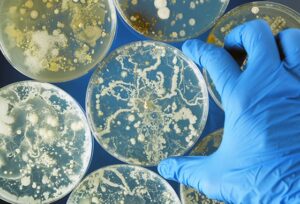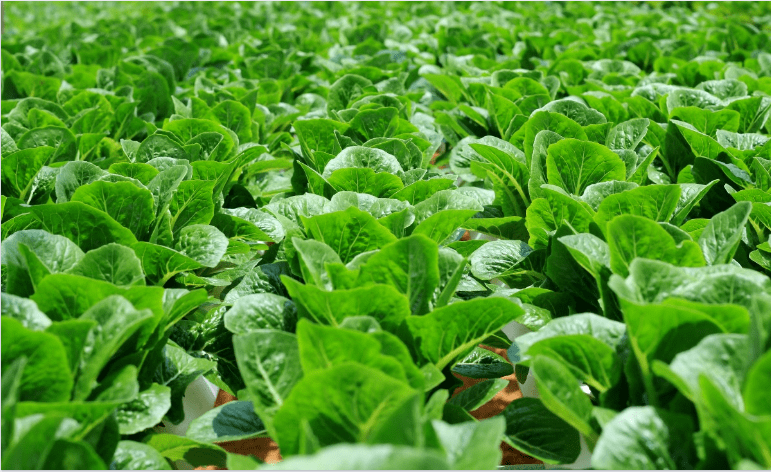 In a sweeping statement, the Centers for Disease Control and Prevention (CDC) warned that romaine lettuce is unsafe to eat, regardless of the source. The warning followed a recent E. coli outbreak associated with romaine lettuce that has left at least thirty-two people sickened in eleven states.
In a sweeping statement, the Centers for Disease Control and Prevention (CDC) warned that romaine lettuce is unsafe to eat, regardless of the source. The warning followed a recent E. coli outbreak associated with romaine lettuce that has left at least thirty-two people sickened in eleven states.
“All Types Or Uses of Romaine Lettuce”
On Nov. 20, 2018, the CDC released a notice on its website that “Consumers who have any type of romaine lettuce in their home should not eat it and should throw it away, even if some of it was eaten and no one has gotten sick.”
The CDC also noted that warning applied to “all types or uses of romaine lettuce, such as whole heads of romaine, hearts of romaine, and bags and boxes of precut lettuce and salad mixes that contain romaine, including baby romaine, spring mix, and Caesar salad.”
Consumers are urged to throw away lettuce even if they are uncertain whether it is romaine and or whether a salad mix contains romaine. In addition to discarding the romaine lettuce, the CDC said that the public should “wash and sanitize drawers or shelves in refrigerators where romaine was stored.”
Thirty-Two Infected, Thirteen Hospitalized
Thirty-two people in eleven states are known to have been infected with the outbreak strain of Shiga toxin-producing E. coli O157:H7. Thirteen of them have been hospitalized, including one person who developed hemolytic uremic syndrome, a form of kidney failure, though no deaths have been reported.
The illnesses in question started on dates ranging from October 8 through October 31, 2018. No common grower, supplier, distributor, or brand of romaine lettuce has been identified, so no type of romaine lettuce should be consumed.
The Public Health Agency of Canada has also identified 18 people who were infected with the same DNA fingerprint of E. coli in the provinces of Ontario and Quebec.
California has the highest number of reported illnesses, with ten people infected. Michigan has seven cases, New Jersey has three, and Illinois, Massachusetts, New Hampshire, and New York have two each. The remainder of the romaine-based E. coli infections have been found in Connecticut, Maryland, Ohio, and Wisconsin.
The Food and Drug Administration (FDA) also issued a statement saying that it is testing romaine for contamination across the country.
“The quick and aggressive steps we’re taking today are aimed at making sure we get ahead of this emerging outbreak, to reduce risk to consumers, and to help people protect themselves and their families from this foodborne illness outbreak,” said FDA Commissioner Scott Gottlieb. “This is especially important ahead of the Thanksgiving holiday, when people will be sitting down for family meals.”
This is the third widespread E. coli outbreak from contaminated romaine lettuce in the past year. The most recent major outbreak lasted from March through June of 2018 and led to 210 cases in thirty-six states. Five people died in that outbreak, which was traced to the growing region of Yuma, AZ, though investigators never conclusively determined the exact source.
The current outbreak does not appear to be connected to the Yuma outbreak. Instead, it involves a strain of E. coli that has the same genetic fingerprint to the previous outbreak from late 2017 that was associated with illnesses from leafy greens in the United States and Canada. That E. coli outbreak was declared over in January 2018.
E. Coli Bacteria: Facts
E. coli (Escherichia coli) are a large and diverse group of bacteria found in the environment, certain foods, and the intestines of humans and animals, including cattle, poultry, and other livestock. Prior to the 1990s, most E. coli cases in humans came from ingesting contaminated hamburger meat. Following safety reforms in the livestock industry, however, most outbreaks have since been associated with leafy greens.
Raw fruits and vegetables can become contaminated with E. coli by coming into contact with feces from infected animals. This fecal contamination may result from direct contact with the animals themselves or from interaction with infected soil, water, or improperly composted manure.
Bacterial contamination may also occur during the handling, storage, and transportation of produce, or it may be the product of cross-contamination from infected raw meat, poultry, or seafood in grocery stores, in refrigerators, and on counters and cutting boards.
While most strains of E. coli are harmless to humans, some forms may cause serious illness, including:
- Gastroenteritis.
- Urinary Tract Infections.
- Pneumonia.
- Respiratory Impairment.
- Hemorrhagic Colitis.
- Crohn’s Disease.
- Bowel Necrosis and Perforation.
- Neonatal Meningitis.
Most people with E. coli infections begin feeling ill within three to four days after ingesting infected food or drink, though illnesses can start anywhere from one to ten days after exposure. Symptoms of E. coli infection may include the following:
- Abdominal Pain/Cramps.
- Diarrhea (Sometimes Bloody).
- Vomiting.
- Fever.
Treatment typically involves the replacement of fluids and electrolytes to combat the dehydration that often results from E. coli infection.
<< BACK TO BLOG POSTS